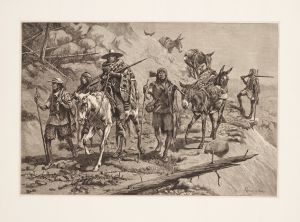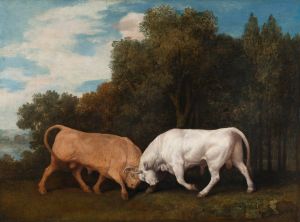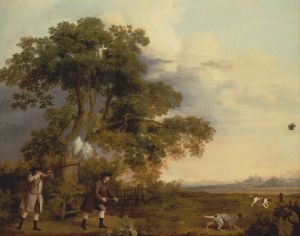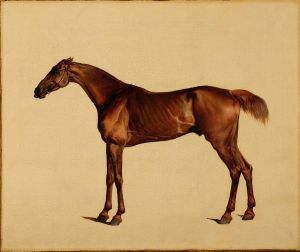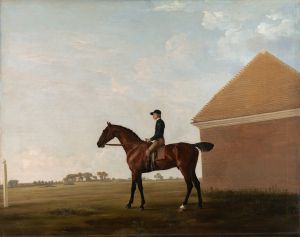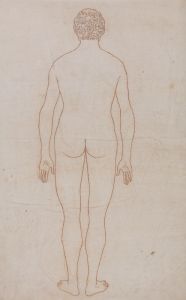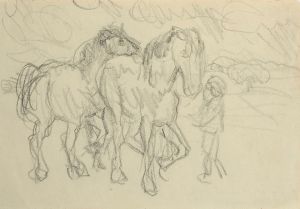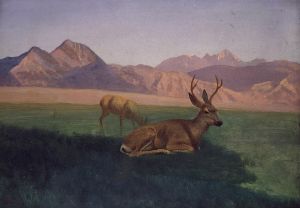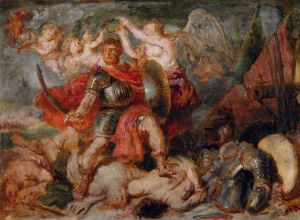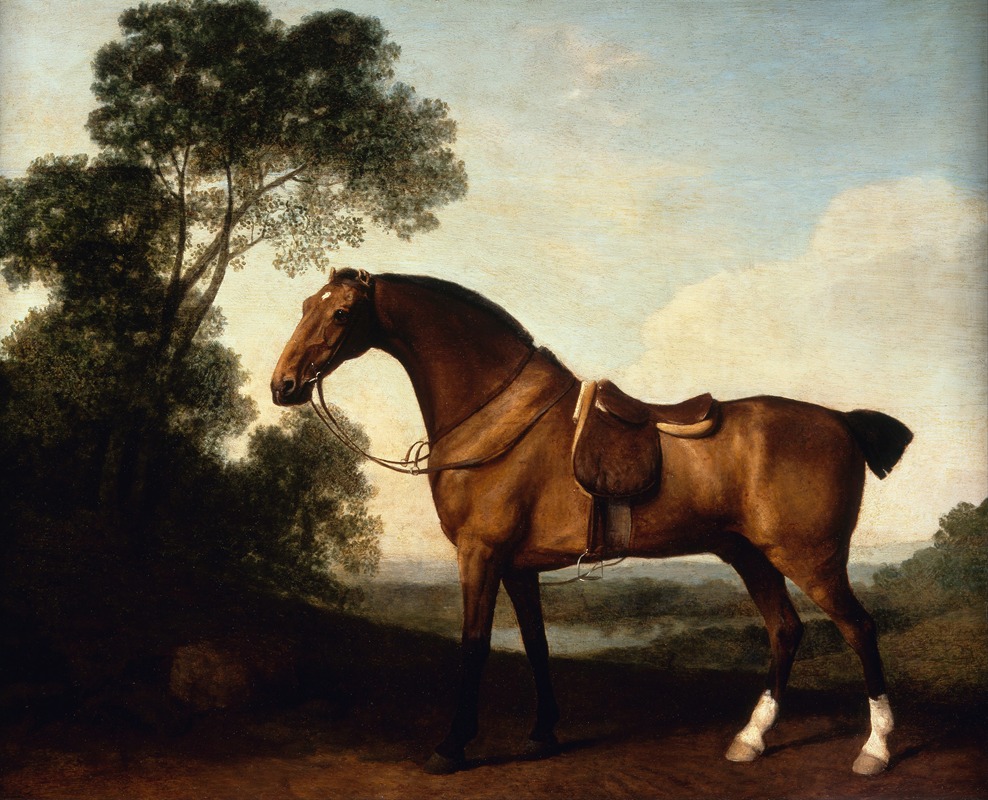
A Saddled Bay Hunter
A hand-painted replica of George Stubbs’s masterpiece A Saddled Bay Hunter, meticulously crafted by professional artists to capture the true essence of the original. Each piece is created with museum-quality canvas and rare mineral pigments, carefully painted by experienced artists with delicate brushstrokes and rich, layered colors to perfectly recreate the texture of the original artwork. Unlike machine-printed reproductions, this hand-painted version brings the painting to life, infused with the artist’s emotions and skill in every stroke. Whether for personal collection or home decoration, it instantly elevates the artistic atmosphere of any space.
George Stubbs (1724–1806) was a renowned British painter, best known for his detailed and anatomically precise depictions of horses. One of his works, A Saddled Bay Hunter, exemplifies his mastery in equine portraiture. Painted in the late 18th century, this artwork reflects Stubbs's dedication to capturing the physicality and elegance of horses, a subject that dominated much of his career.
The painting depicts a bay hunter, a type of horse bred for fox hunting, standing calmly with a saddle on its back. The animal is portrayed in profile, a common compositional choice in Stubbs's equestrian works, allowing for a clear and detailed representation of the horse's musculature and form. The bay coat, characterized by its reddish-brown color with black mane, tail, and lower legs, is rendered with Stubbs's characteristic attention to texture and light, giving the horse a lifelike presence. The background is relatively simple, with a muted landscape that serves to emphasize the central figure of the horse.
Stubbs's expertise in painting horses was rooted in his scientific approach to anatomy. He famously conducted dissections of horses and published his findings in The Anatomy of the Horse (1766), a groundbreaking work that influenced both art and veterinary science. This meticulous study of equine anatomy is evident in A Saddled Bay Hunter, where the horse's proportions and musculature are depicted with remarkable accuracy.
The painting is also notable for its subtle interplay of light and shadow, which enhances the three-dimensionality of the horse and adds depth to the composition. Stubbs's use of oil paints allowed him to achieve a rich tonal range, capturing the sheen of the horse's coat and the texture of the saddle and bridle.
While the exact commission details or ownership history of A Saddled Bay Hunter are not widely documented, it is consistent with Stubbs's body of work, which often catered to wealthy patrons involved in equestrian pursuits. His paintings were highly sought after by aristocrats and landowners who valued horses as symbols of status and power.
Today, George Stubbs is celebrated as one of the greatest animal painters in Western art history, and works like A Saddled Bay Hunter continue to be admired for their technical precision and artistic beauty. The painting is an enduring testament to Stubbs's ability to combine scientific observation with artistic expression.






